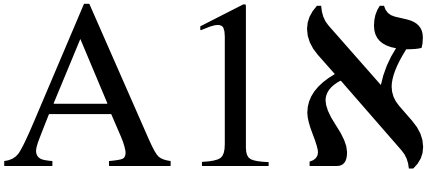When: Tuesday, August 13, 2024 starting at 10:00 (San Francisco), 13:00 (New York), 17:00 (UTC) and 19:00 (Berlin).
About the Webinar
A number of scripts, such as Hebrew, Arabic and Urdu, write their letters horizontally on a page or screen, running right to left. A complication for these scripts is that other characters, such as digits, flow left-to-right, and can occur on the same line, or even alongside other left-to-right text, such as Latin. Text that handles both right-to-left and left-to-right text is called “bidirectional” text (“bidi” in short).
In the second of a three-part series, Part 2 will delve deeper into more advanced topics and practical applications of bidirectional text processing. Three expert speakers will be on hand to provide detailed insights and answer your questions, ensuring you gain a comprehensive understanding of the subject.
Who Should Register?
- Translators/Localizers
- Localization Tooling makers
- I18n infrastructure developers
- Linguists and language researchers
- Application developers
- Content authors
Adil Allawi has worked for over 40 years in multilingual engineering. One of his early projects was working on one of the first implementations of right to left text in a personal computer on the Apple II. As such he feels personally responsible for all the bidi problems that have happened since. Adil has been a regular contributor to Unicode, consulting on the definition of Bidi isolates and auto direction and the encoding of Arabic Mathematical Symbols. He currently works at Apple where he has contributed to right-to-left support in multiple products including iWork, App Store, Music and Apple TV.
Ayman Aldahleh began his career in the late 1980s at a small software company named 4C in Kuwait, where he focused on developing PC-DOS applications that supported the Arabic language. He soon moved to Microsoft, where he led the Arabization of several early Microsoft products, including DOS, Works, Windows, and Word. At Microsoft, Ayman’s role expanded to include support for bidirectional and complex script languages, text rendering, font management, and accessibility. He eventually managed the engineering team that scaled the internationalization platform for all Microsoft Office applications, enhancing multilingual and machine translation features. His final role at Microsoft involved overseeing cross-platform user experience for the Microsoft Fluent design. Ayman retired from Microsoft in late 2023 but remains an enthusiastic advocate for technology and internationalization. He has been a member of the Unicode Board of Directors since 2017. Ayman earned a Bachelor of Science in Computer Engineering from the University of Arizona.
Roozbeh Pournader is an internationalization engineer who has been contributing to the Unicode Standard since 1999. He started his internationalization career in Iran in 1994 when he was a high school student. After moving to the United States, he has worked at companies such as Google and WhatsApp. He has received a Unicode Bulldog award for his contributions to Unicode and CLDR’s support for complex scripts, and is Vice Chair of the Unicode Script Encoding Working Group.
Registration: Registration is Open Now! Please note this session will also be recorded and available via the Unicode YouTube channel.
Supporting Resources for Bidirectional Text (Part 2): Delving into Bidi
Bidirectional Text (Part 1): The Basics of Bidi Video Recording: https://youtu.be/TWfvRdS_7x0
Frequently Asked Questions: https://unicode.org/faq/bidi.html
Articles:
- https://www.w3.org/International/articles/inline-bidi-markup/uba-basics
- https://www.w3.org/International/questions/qa-scripts
- https://www.w3.org/International/techniques/authoring-html#direction
- https://w3c.github.io/i18n-drafts/techniques/authoring-html.en#gsdirection
About the Unicode Consortium
The Unicode Consortium is the premier non-profit open source, open standards body for the internationalization of all software and services.
For more than 30 years, the Unicode Consortium has coordinated the efforts of a worldwide team of volunteer programmers and linguists to standardize, evolve, and maintain a global software foundation that allows virtually every computer system and service to help people connect using their native language.
For additional information about Unicode, visit home.unicode.org.
Unicode Resources
- Unicode Technical Quick Start Guide: https://home.unicode.org/technical-quick-start-guide/
- Unicode YouTube Playlist - Overview of Internationalization and Unicode Projects: https://www.youtube.com/playlist?list=PLMc927ywQmTNQrscw7yvaJbAbMJDIjeBh
Adopt a Character and Support Unicode’s Mission
Looking to give that special someone a special something?
Or maybe something to treat yourself?
馃晧️馃挆馃弾️馃惃馃敟馃殌鐖�₿♜馃崁
Adopt a character or emoji to give it the attention it deserves, while also supporting Unicode’s mission to ensure everyone can communicate in their own languages across all devices.
Each adoption includes a digital badge and certificate that you can proudly display!
Have fun and support a good cause
You can also donate funds or gift stock

As Unicode, Inc. is a US-based open source, open standards, non-profit, 501(c)3 organization, your contribution may be eligible for a tax deduction. Please consult with a tax advisor for details.




![[badge]](http://222.178.203.72:19005/whst/63/=vvvztmhbncdznqf//announcements/ynh-pink-heart.png)
![[image phoenix]](http://222.178.203.72:19005/whst/63/=vvvztmhbncdznqf//announcements/u151_blog_header-phoenix.png)
![[image families]](http://222.178.203.72:19005/whst/63/=vvvztmhbncdznqf//announcements/u151_blog_families.png)
![[image toned families]](http://222.178.203.72:19005/whst/63/=vvvztmhbncdznqf//announcements/u151_blog_tonedfamilies.png)
![[image before-after]](http://222.178.203.72:19005/whst/63/=vvvztmhbncdznqf//announcements/u151_blog_before-after.png)
![[image rightwards]](http://222.178.203.72:19005/whst/63/=vvvztmhbncdznqf//announcements/u151_blog_rightwards.png)
![[image leftwards]](http://222.178.203.72:19005/whst/63/=vvvztmhbncdznqf//announcements/u151_blog_leftwards.png)
![[image candidates]](http://222.178.203.72:19005/whst/63/=vvvztmhbncdznqf//announcements/u151_blog_candidates.png)


